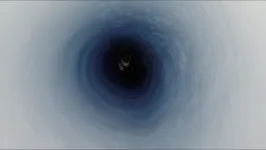(Press-News.org) New findings in color vision research imply that humans can perceive a greater range of blue tones than monkeys do.
“Distinct connections found in the human retina may indicate recent evolutionary adaptations for sending enhanced color vision signals from the eye to the brain,” researchers report April 25 in the scientific journal, Proceedings of the National Academy of Sciences.
Yeon Jin Kim, acting instructor, and Dennis M. Dacey, professor, both in the Department of Biological Structure at the University of Washington School of Medicine in Seattle, led the international, collaborative project.
They were joined by Orin S. Packer of the Dacey lab; Andreas Pollreisz at the Medical University of Vienna, Austria; as well as Paul R. Martin, professor of experimental ophthalmology, and Ulrike Grünert, associate professor of ophthalmology and visual science, both at the University of Sydney, Australia, and the Save Sight Institute.
The scientists compared connections between color-transmitting nerve cells in the retinas of humans with those in two monkeys, the Old World macaque and the New World common marmoset. The ancestors of modern humans diverged from these two other primate species approximately 25 million years ago.
By using a fine scale microscopic reconstruction method, the researchers wanted to determine of the neural wiring of the areas associated with color vision is conserved across these three species, despite each taking their own independent evolutionary pathways.
The scientists looked at the lightwave-detecting cone cells of the fovea of the retina. This small dimple is densely packed with cone cells. It is the part of the retina responsible for the sharp visual acuity needed to see important details, such as words on a page or what’s ahead while driving, and for color vision.
Cone cells come in three sensitivities: short, medium and long wavelengths. Information about color comes from neural circuits that process information across different cone types.
The researchers discovered that a certain short-wave or blue sensitive cone circuit found in humans is absent in marmosets. It is also different from the circuit seen in the macaque monkey. Other features the scientists found in the nerve cell connections in human color vision were not expected, based on earlier nonhuman primate color vision models.
A better understanding of the species-specific, complex neural circuitry that codes for color perception could eventually help explain the origins of the color vision qualities that are distinct to humans.
The researchers also mentioned the possibility that differences among mammals in their visual circuitry could have been at least partially shaped by their behavioral adaptation to ecological niches. Marmosets live in trees whereas humans prefer to dwell on land. The ability to spot ripe fruit among the shifting light of a forest, for example, may have offered a selective advantage for particular color visual circuity. However, actual effects of environment and behavior on color vision circuitry have not yet been established.
More generally, comparative studies of neural circuits at the level of connections and signaling between nerve cells, the researchers noted, could help answer many other questions. These include elucidating the underlying logic of neural circuit design and providing insight into how evolution has modified the nervous system to help shape perception and behavior.
The research reported in the PNAS article “Comparative connectomics reveals noncanonical wiring for color vision in human foveal retina” was supported by National Institutes of Health grants EY-028282, RR-00166, P51 OD00425, and EY01730.
END
Do people and monkeys see colors the same way?
Study shows some nerve cell circuits for color vision are uniquely human.
2023-05-01
ELSE PRESS RELEASES FROM THIS DATE:
Organ transplant policies need an overhaul!
2023-05-01
INFORMS Journal Manufacturing & Service Operations Management New Study Key Takeaways:
Matching supply and demand of organs can provide broader sharing in a way that results in greater transplant equity.
By indiscriminately enlarging the pool of supply locations from where patients can receive offers, they tend to become more selective, resulting in more offer rejections and less efficiency.
The model accounts for the variation of “incidence of disease” (i.e., demand) and “availability of deceased-donor organs” ...
Scientists describe carbon cycle in a subglacial freshwater lake in Antarctica for first time
2023-05-01
TAMPA, Fla. (May 1, 2023) – Subglacial lakes that never see the light of day are among the least accessible frontiers of science, brimming with more tales yet untold than even the planets of our solar system. One thing seems certain: where there is water, there is life -- even if said water is at the bottom of a frigid lake, in pitch darkness, below more than a half mile of the West Antarctic Ice Sheet.
As reported in AGU Advances, scientists analyzed the chemical fingerprint of the ocean and microbes retrieved from sediments and water at the bottom of a subglacial ...
Sensor enables high-fidelity input from everyday objects, human body
2023-05-01
Images // Video
Couches, tables, sleeves and more can turn into a high-fidelity input device for computers using a new sensing system developed at the University of Michigan.
The system repurposes technology from new bone-conduction microphones, known as Voice Pickup Units (VPUs), which detect only those acoustic waves that travel along the surface of objects. It works in noisy environments, along odd geometries such as toys and arms, and on soft fabrics such as clothing and furniture.
Called SAWSense, for the surface acoustic waves it relies ...
DOE’s Office of Science Graduate Student Research (SCGSR) program selects 87 outstanding US graduate students
2023-05-01
WASHINGTON, DC – The Department of Energy’s (DOE’s) Office of Science has selected 87 graduate students representing 33 states for the Office of Science Graduate Student Research (SCGSR) program’s 2022 Solicitation 2 cycle. Through world-class training and access to state-of-the-art facilities and resources at DOE national laboratories, SCGSR prepares graduate students to enter jobs of critical importance to the DOE mission and secures our national position at the forefront of discovery and innovation.
“The SCGSR program provides a way for graduate students to enrich their scientific research by engaging with ...
Interactive 3D model recreates Old Man of the Mountain
2023-05-01
Twenty years after the Old Man of the Mountain collapsed, audiences around the world will now be able to explore the iconic symbol of New Hampshire through an online interactive 3D model created by Matthew Maclay, a graduate student in earth sciences at Dartmouth's Guarini School of Graduate and Advanced Studies.
The face-shaped granite formation on the northeast side of Cannon Cliff in Franconia Notch State Park fell off the cliff on May 3, 2003, drawing international attention and dismay in New Hampshire itself.
"People continue to have a very emotional connection to the Old Man of the Mountain—the state emblem of New Hampshire, so I am really excited that this 3D ...
Thrift shops thrive when disorder is balanced with high seller knowledge
2023-05-01
UNIVERSITY PARK, Pa. — One person’s trash may well be another’s “come up,” or what the rapper Macklemore calls hidden treasures in the song “Thrift Shop,” but only if secondhand shoppers follow the rapper’s lead and dig through what are sometimes messy bins. New research from Penn State and Texas Christian University shows that shoppers looking to “pop some tags” may be drawn to disordered thrift shop displays because they signal hidden treasure in their inventory.
“Secondhand markets are growing in ...
Exposure to airplane noise increases risk of sleeping fewer than 7 hours per night
2023-05-01
A new study has found that people who were exposed to even moderate levels of aircraft noise were less likely to receive the minimum recommended amount of sleep each night, and this risk increased among people living in the Western U.S., near a major cargo airport, or near a large water body, and among people with no hearing loss.
As major airline officials predict another record summer air travel season, a new analysis by Boston University School of Public Health (BUSPH) and Oregon State University has found that exposure to even moderate levels of airplane noise may disrupt sleep, building upon a growing body of research ...
X-ray imaging captures fleeting defects in sodium-ion batteries
2023-05-01
ITHACA, N.Y. - Sodium-ion batteries have been touted as a sustainable alternative to lithium-ion batteries because they are powered by a more abundant natural resource. However, sodium-ion batteries have hit a significant snag: the cathodes degrade quickly with recharging.
A Cornell University-led collaboration succeeded in identifying an elusive mechanism that can trigger this degradation – transient crystal defects – by using a unique form of X-ray imaging that enabled the researchers to capture the fleeting defects while the battery was in operation.
The group’s ...
AGS welcomes 16 new fellows recognized for exceptional commitment to geriatrics
2023-05-01
New York (May 1, 2023) — Today the American Geriatrics Society (AGS) announced the 16 AGS members who have been awarded AGS Fellowship. This distinction recognizes AGS members for their deep commitment to the AGS and to advancing high-quality, person-centered care for us all as we age. The new AGS fellows will be formally recognized at the 2023 AGS Annual Scientific Meeting (#AGS23; May 4-6).
“We are delighted to be recognizing our AGS member colleagues for their ...
In US system of allocating livers for transplanting, geographic inequity persists despite recent policy changes
2023-05-01
In the United States, an average of three people die every day waiting for a liver transplant, which resulted in nearly 1,200 lives lost in 2021. Liver allocation policy has undergone major modifications in the last 10 years. In a new study, researchers examined these policies, finding that despite the changes, geographic inequity persists. The authors recommend a more efficient and equitable way to allocate livers.
The study, by researchers at Carnegie Mellon University (CMU) and the University of Maryland (UMD), is forthcoming in Manufacturing & Service Operations Management.
“We suggest policymakers move away from the ‘one- size-fits-all’ approach of current ...
LAST 30 PRESS RELEASES:
New evidence challenges understanding of Parkinson’s disease
A new study reveals how embryos and the uterus “talk” during implantation
Cedars-Sinai reports heart attacks, general illness spiked after LA fires
PolyU develops ultra-stable, mucus-inspired hydrogel to boost gastrointestinal wound healing
Flour choice shapes sourdough microbial communities
Can a retinal implant reverse macular degeneration?
Feeding fungi plant remnants produces tasty protein to fortify vegan, vegetarian diets
New tech reduces false positives from breast ultrasounds
Drone-mounted lab monitors fertilizer runoff in real time
Short, light-intensity exercise boosts executive function and elevates mood in children
Jeonbuk National University researchers reveal new interface engineering strategy for efficient and stable back-contact solar cells
Tyrosinase drives hydroquinone-induced exogenous ochronosis: not HGD inhibition
UMass Amherst chemists develop unique tool for studying RNA
Disappointment alters brain chemistry and behavior
A built-in odometer: new study reveals how the brain measures distance
Stress-related brain signals drive risk of cardiovascular disease in people with depression and anxiety
New details on role of fat transport molecules in Alzheimer’s onset
Study illuminates how an antiviral defense mechanism may lead to Alzheimer’s disease
Spot the males: New gene-editing method could transform mosquito control
AI learns to build simple equations for complex systems
NAU team releases 13 years of detailed U.S. CO2 emissions data
Unveiling how sodium-ion batteries can charge faster than lithium-ion ones
How do childcare tax credits affect children’s long-term health?
Can an electronic nose detect indoor mold?
Do natural disasters have long-term impacts on mortality in older adults?
Modification improves sodium‐ion batteries as an alternative to lithium-ion batteries
Parasports provide a range of benefits for people with cerebral palsy
How does grandparental care affect children’s health?
Why are there so many Nordic mediators?
Young shark species more vulnerable to extinction
[Press-News.org] Do people and monkeys see colors the same way?Study shows some nerve cell circuits for color vision are uniquely human.



